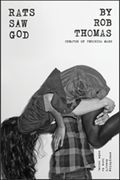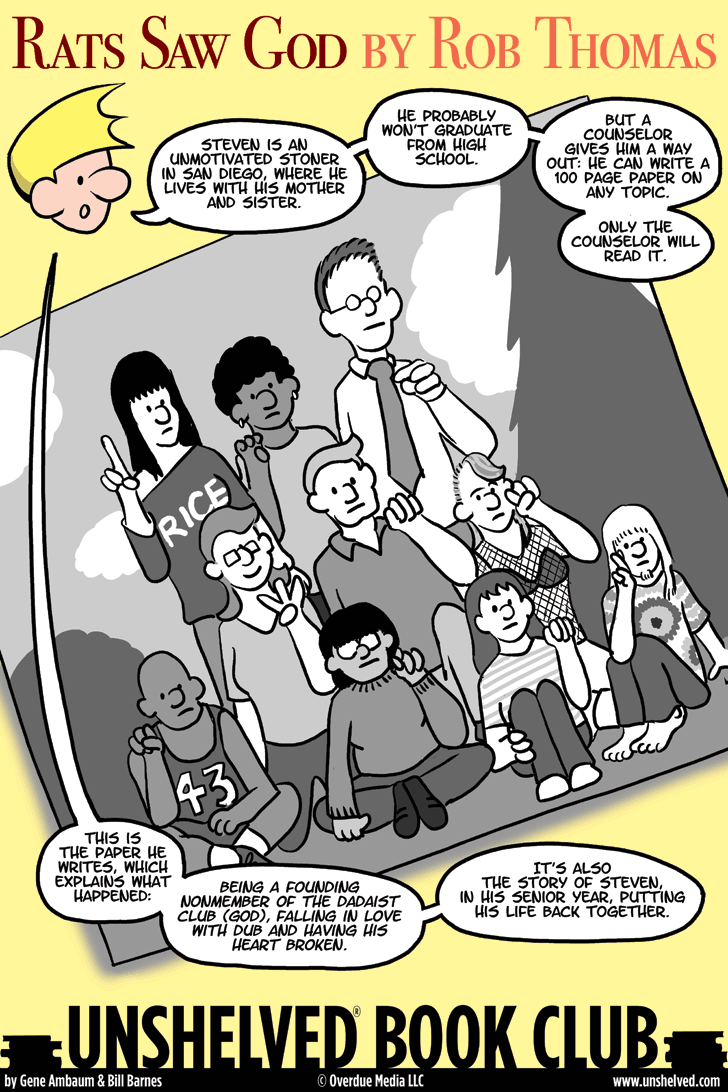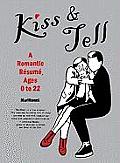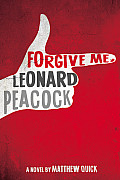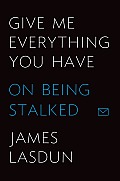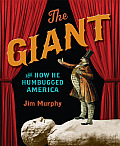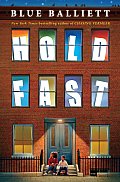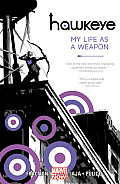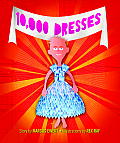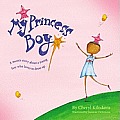Link to this review in the form of a comic strip by geneambaum tagged coming of age
Link to this review by geneambaum tagged biography • graphic novel • coming of age
A graphic novel autobiography told in short episodes showing every romantic interaction in the author’s life, from not getting the kisses she wanted from a boy when she was five, to her first real kiss, to becoming sexually active, and beyond.
Why I picked it up: My friend Dan said it was great.
Why I finished it: The sheer comprehensiveness of MariNaomi’s romantic inventory made me think about moments in my life I’d forgotten, especially “relationships” I had when I was in grade school. I was alternately giggling and embarrassed both for MariNaomi and myself.
And the painful disconnect between her and her father made me think about how little I revealed myself to my parents as a teenager. Her dad told her not to date until she was sixteen, and he was sure she was saving herself for marriage. Nothing could have been farther from the truth, and I was waiting for him to find out what she was up to, even though my parents never did.
I’d give it to: My wife, Silver. We’re preparing for the teen years in our house (our daughter is about to turn eleven), and I want her to have an idea about teen culture in the U.S by reading about what MariNaomi was up to when she was fourteen.
Link to this review by flemtastic tagged coming of age
It’s Leonard’s eighteenth birthday. He plans to celebrate by giving gifts to four special people before using an old pistol to kill his former best friend and then himself.
Why I picked it up: I have liked Matthew Quick’s books since I read The Silver Linings Playbook years ago. And his Boy21, about a boy suffering because of a traumatic event in his life, was handled with sensitivity and felt totally real.
Why I finished it: Leonard is socially awkward, yet he does have a few people in his life that see past his strangeness. His neighbor, Walt, a chain-smoking film buff, is a friend. They obsessively watch Bogart films together, and converse mainly in quotes from them — their relationship is wonderful.
At one point, Leonard is stopped in the hallway by the school counselor, with a gun in his backpack, and he thinks to himself that if she wishes him a happy birthday, he will not go through with his plans. She doesn’t, and he continues. Those types of poignant, realistic moments occur frequently throughout the book.
I’d give it to: Ashley, who loved Thirteen Reasons Why by Jay Asher. She would like that Leonard, even in the midst of his pain, has ties to his history teacher, to Walt, and to others that make him want to live despite feeling suicidal.
Link to this review by flemtastic tagged nonfiction
James Lasdun, an award-winning poet, author, and freelance writer, met Nasreen in a course he was teaching at a university. She was a quiet and unremarkable student, but after she turned in the first draft of a few chapters of a book about 1970’s Iran, Lasdun told the class he was impressed. Nasreen asked him to read her entire draft; he demurred, but did refer her on to his editor. Nasreen stayed in contact via weekly, friendly emails even after the course ended. Over time these strayed into uncomfortable, flirty territory. After Lasdun categorically stated that he was not interested in a physical relationship, her emails turned nasty, anti-Semitic, and promised his “ruin.” She set out to create problems for him both on- and off-line, including with his employers.
Lasdun is quite introspective. He examines his part in the incident, which lasted several years, and how the stalking affected every aspect of his life. Lasdun was encouraged by his wife and colleagues to write this book because Nasreen’s side has already played out online.
Why I picked it up: I heard a book review on NPR.
Why I finished it: Lasdun saved many of the messages that Nasreen sent him, and he quotes extensively from them to show her aggression and manic behavior, which sometimes included dozens of emails a day. They are epic in scope, frequency, paranoia and vitriol. If anything, Lasdun’s refusal to answer her emails upped the ante, despite the fact he was counseled not to respond by police. His willingness to tell all, embarrassing or not, really allowed me to see the progression of how a stalking victim moves from puzzlement, to fear, to feeling intimidated, and then possibly to getting over it all (in Lasdun’s case, his book served as a catharsis).
I’d give it to: Amy, a colleague who has a sardonic wit. She would appreciate Nasreen’s deviousness and creativity, like when she sent a caustic, accusatory email to the department chair of the university where Lasdun had just begun teaching. (Surprisingly, the chair wasn’t worried about potentially inappropriate relationships Lasdun may have been having with his students, but was concerned with charges of plagiarism.)
Link to this review by sarahhunt tagged nonfiction
In 1869 in Cardiff, New York, some men digging a well on a farm discovered a perfectly-preserved fossilized giant man. It was quickly dubbed The Cardiff Giant and put on display (for a small admission fee, of course). The giant eventually went on tour to be gazed at in amazement by huge crowds (and earned a huge amount of money).
As the title suggests, it was a fake. But why did so many people believe it?
Why I picked it up: I had heard about the Cardiff Giant but wanted to know his whole story, and Jim Murphy is a really great history writer.
Why I finished it: Ordinary folks were just looking for a thrill when they paid to see a giant, but the promoters had a different reason for believing: money. As soon as they started to suspect that the whole thing was a fraud, they sold their shares in the show to other people, creating a pyramid scheme which everyone involved was desperately propping up.
I’d give it to: Aaron, who will get a kick out of how carefully posed all of the contemporary photos of the giant are to hide the fact that he was completely anatomically correct. He’d also like that when the owners refused to sell the giant to P.T. Barnum, Barnum just made his own giant and claimed it was the original.
Link to this review by billba tagged humor • comic strips
A collection of cartoons about a T-Rex trying to do a variety of things who is continually stymied, usually due to his tiny arms.
Many were originally published on this tumblr, which also features the similarly limited activities of the Persevering Penguins.
Why I picked it up: Penguin’s Alan Walker handed it to me, and I fell immediately in love with this unlikely antihero. He told me it had a happy ending that I would particularly appreciate.
Why I finished it: It does, and I did. The illustrations (black and white with an occasional splash of red) each tell a sad little story, sublime in its simplicity. Whether trying to make balloon animals, play tetherball, or spin the wheel on The Price Is Right, T-Rex’s inconvenient form factor pulls at my heartstrings.
I’d give it to: Rosie, who laughed at the tragic, sad face which accompanies all of T-Rex’s antics. She particularly liked “T-Rex Trying To Do a Cartwheel” and “T-Rex Trying To Do Downward Dog,” perhaps because she can remember when her arms were too short, as well.
Link to this review by emilyreads tagged coming of age • mystery
Early’s family doesn’t have a lot of money, but they have big dreams about going to college and buying a real house. Her father, Dash, is a page at the Chicago Public Library, and fills his family’s home with a love of books and words. When Dash goes missing one cold winter day, Early, her mother, Summer, and her brother, Jubilation, are bereft. Things quickly sour when the family is robbed and terrorized at home one night by bad guys looking for Dash and a book he may have, something connected with extra work he was doing with one of his library colleagues.
Afraid to stay at home, Early and her family move into a shelter. Since the police are no help — they think Dash was a thief who got caught in the wrong place — Early decides to take matters into her own hands. She teams up with Dash’s former teacher to help unravel the sinister goings-on at the library, and, with luck, find her father.
Why I picked it up: I liked Balliett’s first book, Chasing Vermeer, and this one had terrific reviews and a kick-ass cover. (Windows! Light! Colors!)
Why I finished it: The crime subplot surprised me — it seemed too convenient and far-fetched for what I was unfairly considering another “homeless” book — so I wanted to see how the author would tie everything together and make it work, both emotionally and logically. I wasn’t disappointed.
I’d give it to: Caroline, my friend from church who heads up our outreach committee. The indignities that Early’s family experience in the shelter (lines for everything, a total lack of privacy, and the scorn of others who look down on them), even from staff with the very best of intentions, would get her dander up. But the story’s resolution has thought-provoking moments of grace that she’d appreciate, and she’d be as misty-eyed as I was.
Link to this review by geneambaum tagged graphic novel • superhero
Clint Barton a.k.a. Hawkeye is the Avenger without superpowers. He’s got a bow, some trick arrows, a purple costume, and, luckily, bags of cash. He loves living on the top floor of a run-down building in Bedford-Stuyvesant, so when the crooked landlord triples the rent and starts evicting tenants, he tries to buy the building. Trouble ensues. Luckily Kate Bishop (also a.k.a. Hawkeye) is around to help, even if she likes to mock his boomerang arrow.
Contains material originally published in Hawkeye #1 - #5 and Young Avengers Presents #6.
Publisher’s Rating: T+
Why I picked it up: Matt Fraction wrote it. He not only wrote The Annotated Mantooth, he also penned the best run on Iron Man ever.
Why I finished it: The drawings, layouts, and especially the colors give the book a wonderfully retro feel even though it’s set in present day. The pace is cinematic, the dialogue snappy, and the jokes would be funny even if you haven’t read about Hawkeye or The Avengers before (a pleasant surprise given most of the in-jokes I read in comics). It reminds me of one of my favorite graphic novels, Darwyn Cooke’s beautiful Catwoman: Selena’s Big Score.
I’d give it to: My daughter. She’s obsessed with the X-men right now, but I think Kate Bishop will get her attention. And since Kate uses a bow, too, I can sell this as a Hunger Games readalike (though I’ll have to make it clear that this book isn’t that violent).
Link to this review by dawnrutherford tagged picture book
These two picture books are about children born as boys, who are drawn to dresses, much to the discomfort of some of the people in their lives.
Why I picked it up: One of my favorite movies is the French film Ma Vie En Rose, about a young boy who has always believed he’s truly a girl and finds an ally in his grandmother. When I read about 10,000 Dresses I wanted to see how this topic would be explored in a contemporary American picture book; when I told my friend Jenny about it, she recommended My Princess Boy, which was written by a local author about her son.
Why I finished it: In 10,000 Dresses, Bailey has wonderful dreams each night about amazing dresses, and is disappointed when his family members keep pointing out, “You’re a boy. Boys don’t wear dresses!” I had to find out where these amazing dreams would lead, and who would help them come true for Bailey. I also loved the way the author referred to Bailey as “her” throughout the book, which struck me as a simple way to introduce children to this topic.
My Princess Boy is a very different book. The young child is accepted by his family for being someone who loves dressing up, though they do not go so far as to change pronouns. The complete acceptance, love, and protection the mother offers in the story is inspiring.
I’d give it to: Amy, who would sincerely appreciate the less realistic (but no less glamorous) dresses Bailey dreams about, including a ball gown made of mirrors. And she would love how the Princess Boy, with his tiara, wand, and tutu, is happy in his freedom to be himself, dancing and playing with utter joy.
